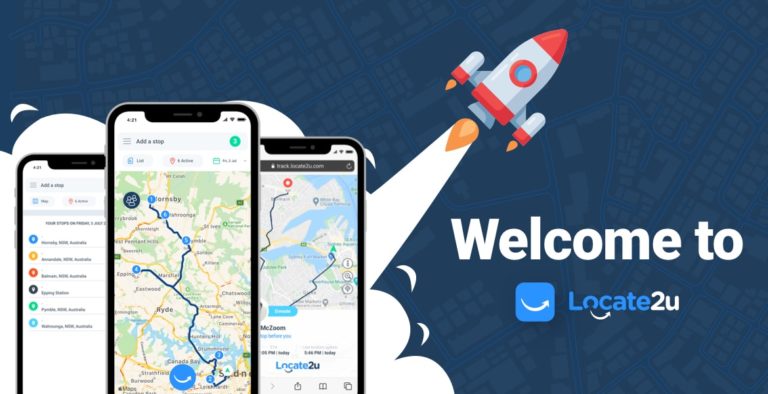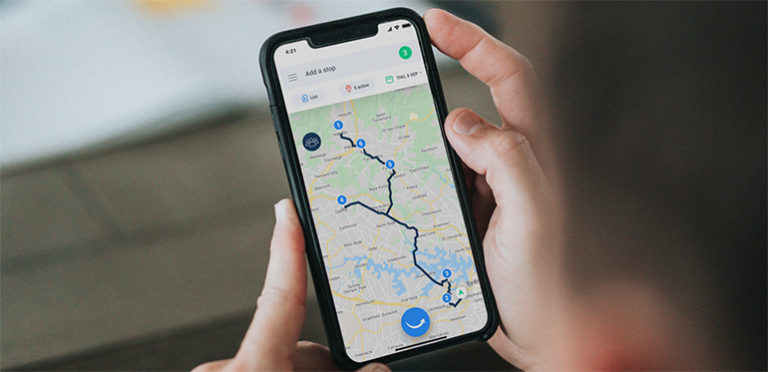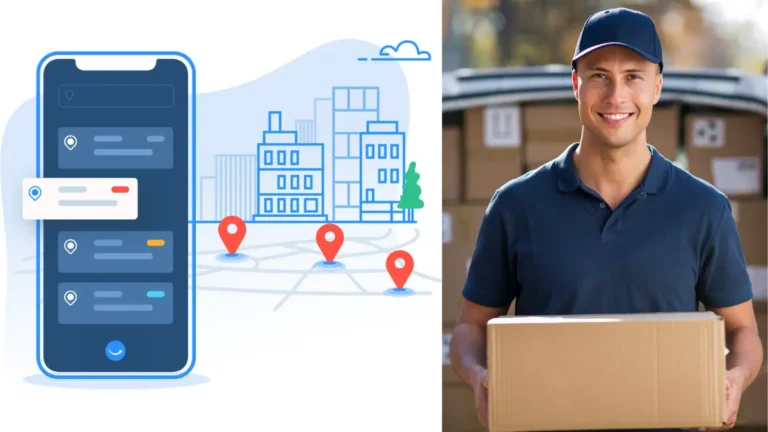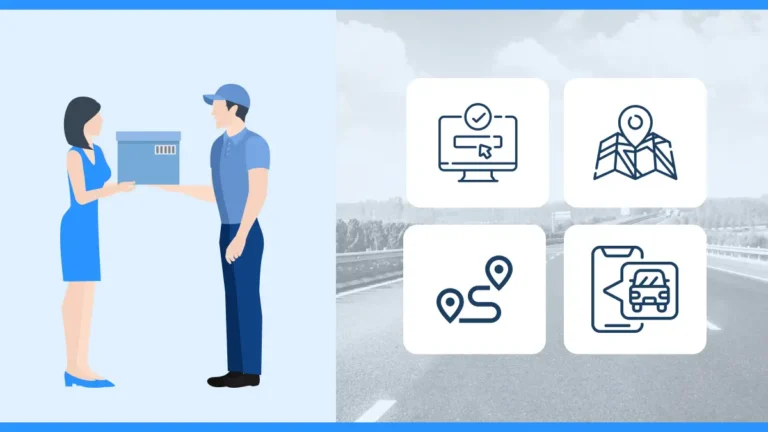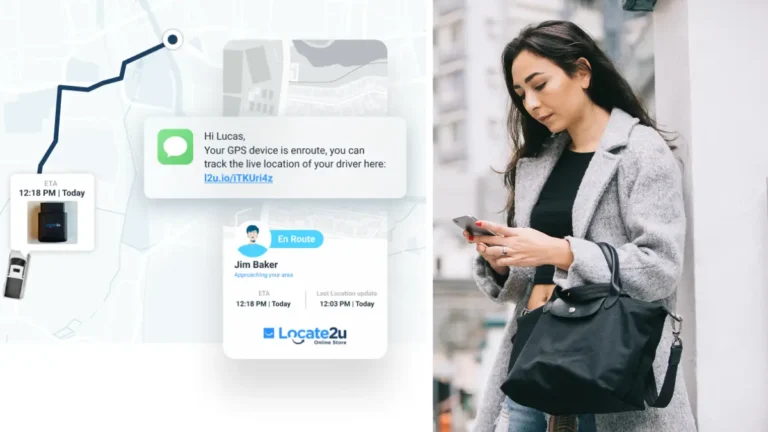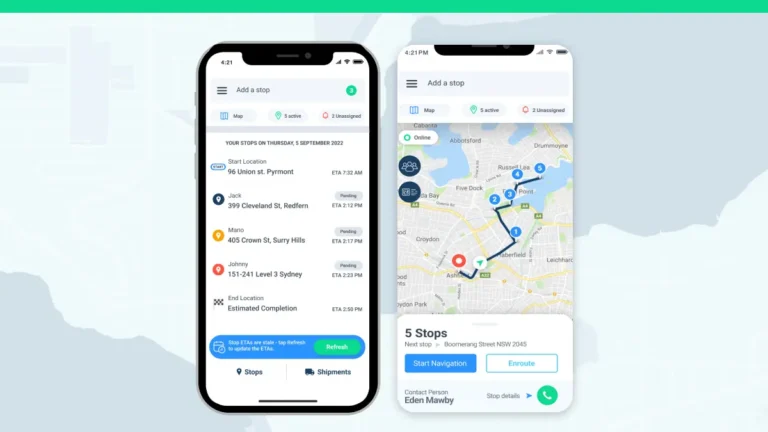When you run a logistics operation or manage a restaurant that delivers to customers, your business’s success often hinges on one critical factor: your drivers.
Whether they’re transporting essential goods across the country or delivering dinner to someone’s doorstep, drivers play a vital role in shaping customer experiences. One of the best ways to assess and optimize these experiences is through driver ratings.
But what exactly are driver ratings, and why do they matter? Let’s explore this essential yet often misunderstood aspect of the logistics process in your business.
Understanding driver ratings
At its core, a driver rating is a metric used to evaluate a driver’s performance based on customer feedback.
Usually scored on a scale of one to five stars, driver ratings are a direct reflection of how satisfied customers are with their delivery experience. In some systems, these ratings may be accompanied by additional comments, such as “Driver was late but polite” or “Handled food delivery with care.”
These ratings provide more than just a snapshot of a driver’s capabilities. They offer a window into how your logistics process is perceived by the end-users.
It’s not just about getting a parcel delivery done—it’s about how well drivers communicate, handle delays, and manage customer expectations along the way.
Why driver ratings are important in logistics
When you think about driver ratings, it’s easy to assume they’re just another number to track, but they’re so much more than that. A strong rating system provides valuable insights into multiple aspects of your business:
Customer satisfaction
High driver ratings indicate that customers are generally pleased with the delivery service. Conversely, low ratings can signal underlying issues that need attention.
Driver performance evaluation
Ratings help identify top-performing drivers and those who may need additional training. This ensures that your team maintains a consistent standard of service.
Operational efficiency
Patterns in driver ratings can reveal inefficiencies in your logistics chain, such as frequent delays or route optimization problems.
Brand reputation
For businesses that rely on third-party drivers, like restaurant owners using delivery apps, driver ratings reflect directly on the brand itself. A poor delivery experience—regardless of who’s driving—can lead to negative reviews and lost customers.
Why should restaurant owners care about driver ratings?
Let’s put you into the shoes of a restaurant owner: You own a popular Italian eatery that offers delivery services. You’ve spent years building a reputation for delicious food and excellent service.
Now that you’ve started offering delivery, you notice a few three-star reviews mentioning slow service, cold food, and drivers who seem “in a hurry.”
These reviews impact more than just your delivery operation—they affect your restaurant’s brand.
After all, when customers order from your restaurant, they’re associating the entire experience, from ordering to the moment food arrives, with you. A poor delivery experience can overshadow a perfectly cooked meal.
Driver ratings provide restaurant owners with actionable insights. If you notice a pattern of lower ratings associated with a particular driver or during certain hours, it’s a clear signal that something needs adjusting.
Maybe the driver is overloaded with deliveries, or maybe the restaurant is taking too long to prepare food during peak hours, affecting the driver’s timeliness.
Here’s a scenario: Let’s say you’ve noticed that driver ratings consistently dip between 6:00 PM and 8:00 PM, your busiest window.
Upon closer investigation, you realize that the kitchen is struggling to keep up with the increased volume, leading to longer wait times for drivers. As a result, deliveries are arriving late, and customers are giving lower ratings.
In this case, the solution isn’t to blame the drivers. Instead, you might hire additional kitchen staff for peak hours or implement a more efficient food preparation process. By addressing the root cause, you’re not only improving driver ratings but also enhancing the overall customer experience.
Locate2u has driver rating software to help delivery companies improve driver performance and customer satisfaction.
What does a driver rating tell you about a customer’s experience?
A driver rating is more than just a numerical value—it’s a reflection of the customer’s overall experience. It encompasses everything from the driver’s punctuality and professionalism to how well they handle unforeseen challenges, like traffic delays or incorrect addresses.
Australian logistics expert and founder of Zoom2u Technologies (ASX:Z2U) Steve Orenstein gives some insight into customer service:
“Great customer experience attracts great reviews, and that experience is not only about the product they bought from you, but also how it was delivered.”

The questions behind a driver rating
You may be new to the delivery space and need some guidance as to what exactly may be going through a customer’s mind when giving you that all-important rating.
Here are some questions that can help determine a driver rating.
Was the delivery on time, early, or late?
Timeliness is a significant factor in how customers perceive their experience. For food deliveries, even a 10-minute delay can mean a cold meal and an unhappy customer.
How did the driver interact with the customer?
Were they polite, respectful, and willing to go the extra mile? A driver who is rude or dismissive can sour an otherwise perfect delivery.
Did the driver handle the goods carefully?
A customer who receives a spilled soup or a smashed burger won’t be impressed, regardless of how delicious it is.
How well did the driver communicate?
If there was a delay, did they inform the customer, did they follow any special instructions, like leaving the food at the doorstep or calling upon arrival.
Picture this: You run a sushi restaurant. You’ve started noticing reviews that mention “Driver did not follow instructions—left food on the porch when I asked for contactless delivery.” These comments are paired with two-star ratings, and you’re starting to worry about the impact on your business.
Here’s where the power of driver ratings comes into play. By reviewing these ratings, you identify a specific driver who seems to struggle with following delivery instructions.
You sit down with them and discover that they were unaware of some of the finer details in the delivery app’s settings.
After a brief training session on how to review and execute customer instructions, the driver’s ratings start to climb.
You also see a noticeable decrease in negative comments. The result? Improved ratings, happier customers, and a more streamlined delivery process.
How to improve driver ratings when deliveries go wrong
No matter how well you train your drivers or how efficient your logistics operation is, things will inevitably go wrong. Traffic jams, incorrect addresses, sudden downpours—there are countless variables that can disrupt even the best-planned deliveries.
However, what sets a good logistics operation apart is how well it handles these disruptions. Here are some practical tips to help improve driver ratings, even when deliveries don’t go as planned:
Communicate proactively with customers
One of the most effective ways to salvage a potentially bad delivery experience is through proactive communication.
Train your drivers to inform customers as soon as they encounter an issue. If a driver knows they’re going to be late due to traffic, a quick call or message to the customer can make a world of difference.
Empower drivers to solve problems
Equip your drivers with the tools and authority they need to resolve issues on the spot. If a customer receives the wrong order, allow the driver to handle it immediately by returning to the restaurant or offering a partial refund (depending on company policy).
This reduces frustration and shows the customer that you’re committed to making things right.
“If you can make sure that when there’s a problem, the customer has the option to give feedback directly to you. You can fix it quickly, and they are more likely to feel looked after than frustrated,” says Orenstein.
Offer compensation or apologies
If a delivery goes awry, consider offering customers a small token of appreciation as an apology—whether it’s a discount on their next order or a complimentary item.
This gesture can turn a negative experience into a positive one, resulting in better ratings and a loyal customer base.
Analyze driver ratings and identify patterns
Regularly review driver ratings to identify patterns and recurring issues. If certain drivers consistently receive low ratings, investigate why. It could be a matter of inadequate training, unrealistic delivery schedules, or other factors within your control.
Here’s a scenario: You run a family-owned pizzeria, and a regular customer calls to complain that their pizza arrived cold.
They’re clearly upset, and their review of the driver is scathing. Instead of letting the issue fester, you take immediate action.
You contact the customer to apologize personally, explaining that you’ve addressed the issue with the driver and offered them additional training. Then, you send the customer a voucher for a free pizza on their next order.
A few days later, you see a follow-up review from the same customer: “Had an issue with my last order, but the owner reached out and made it right. Appreciate the effort—food was perfect this time around!”
Not only did you salvage a potentially lost customer, but you also showed that your business values feedback and takes it seriously.

Real-time tracking and positive driver ratings
Real-time tracking technology offers more than just convenience—it gives customers a sense of control and confidence in the delivery process.
This transparency can help minimize frustration, allow customers to plan their day around expected delivery times, and ensure that orders arrive as promised.
Real-time tracking can turn a typical delivery experience into a seamless journey, positively impacting driver ratings and customer satisfaction.
Picture this: You are a new furniture business owner who just started using real-time delivery tracking for your delivery drivers.
A customer places a furniture order. Instead of waiting anxiously and wondering when it will arrive, the customer can see exactly where the driver is on the live tracking.
The customer notices the driver navigating through traffic, and the estimated arrival time adjusts in real-time.
This feature allows the customer to time his activities perfectly.
Because the customer felt in control throughout the process and could plan the day without unnecessary stress surrounding the furniture delivery, they left a glowing five-star rating with a comment: “Loved tracking the delivery—arrived exactly as expected! Great service!”
Empowering the customer to stay informed results in a satisfied customer and a positive driver rating for your business.

Key insights into customer psychology when rating drivers
A report titled Impact of delivery performance on online review ratings: the role of temporal distance of ratings explores how delivery performance influences customer review ratings.
The report finds that customers penalize late deliveries more harshly than they reward early deliveries.
It also shows that the time between delivery and review positively affects ratings, meaning that reviews posted further from the delivery date tend to be more favorable.
Implementing driver ratings in your logistics operation
If your logistics operation or restaurant doesn’t currently use driver ratings, it’s time to consider implementing them.
Driver ratings are not only valuable for assessing performance but also for building stronger relationships with customers.
How to get started with a driver rating app
Step1: Choose a rating system: Decide on a simple and intuitive rating system—most companies opt for a five-star scale.
Step 2: Integrate ratings into your existing process: If you use delivery management software, look for one that allows for seamless integration of customer feedback and ratings.
Step 3: Train your drivers: Make sure drivers understand how ratings work and what’s expected of them. Encourage them to ask for feedback and continuously strive to improve.
Step 4: Review and act on ratings regularly: Make it a habit to review driver ratings on a regular basis. Address any concerns promptly and use the feedback to implement continuous improvements.
Let’s recap: What are driver ratings?
- A driver rating measures a driver’s performance based on what customers think of their service.
- Regularly reviewing driver ratings can help you keep your finger on the pulse to ensure customers receive the best.
- Real-time tracking can assist your drivers to keep the customer in control of the delivery and have a stress-free experience.
- Great reviews come from a great customer experience, which includes not just the product but also how it was delivered.
NOW READ: What is a route planning app?
Photo Credit: Canva
About the author
Sharl is a qualified journalist. He has over 10 years’ experience in the media industry, including positions as an editor of a magazine and Business Editor of a daily newspaper. Sharl also has experience in logistics specifically operations, where he worked with global food aid organisations distributing food into Africa. Sharl enjoys writing business stories and human interest pieces.




